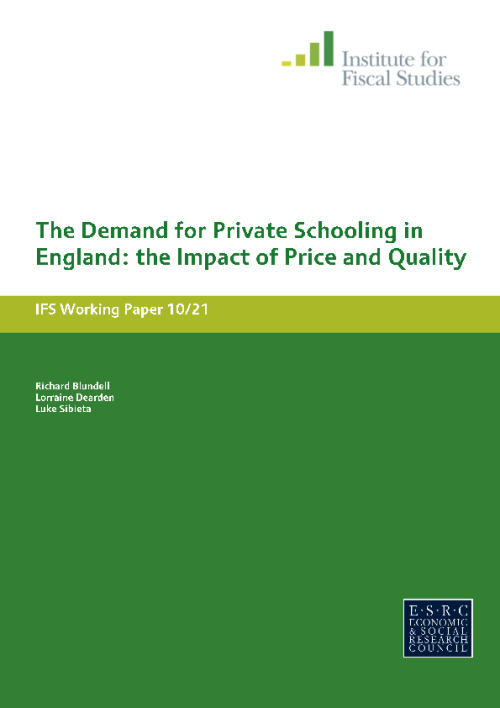In this paper we use English school level data from 1993 to 2008 aggregated up to small neighbourhood areas to look at the determinants of the demand for private education in England from the ages of 7 until 15 (the last year of compulsory schooling). We focus on the relative importance of price and quality of schooling. However, there are likely to be unobservable factors that are correlated with private school prices and/or the quality of state schools that also impact on the demand for private schooling which could bias our estimates. Our long regional and local authority panel data allows us to employ a number of strategies to deal with this potential endogeneity. Because of the likely presence of incidental trends in our unobservables, we employ a double difference system GMM approach to remove both fixed effects and incidental trends. We find that the demand for private schooling is inversely related to private school fees as well as the quality of state schooling in the local area at the time families were making key schooling choice decisions at the ages of 7, 11 and 13. We estimate that a one standard deviation increase in the private school day fee when parents/students are making these key decisions reduces the proportion attending private schools by around 0.33 percentage points which equates to an elasticity of around -0.26. This estimate is only significant for choices at age 7 (but the point estimates are very similar at the ages of 11 and 13). At age 11 and age 13, an increase in the quality of local state secondary reduces the probability of attending private schools. At age 11, a one standard deviation increase in state school quality reduces participation in private schools by 0.31 percentage points which equates to an elasticity of -0.21. The effect at age 13 is slightly smaller, but still significant. Demand for private schooling at the ages of 8, 9, 10 and 12, 14 and 15 are almost entirely determined by private school demand in the previous year for the same cohort, and price and quality do not impact significantly on this decision other than through their initial influence on the key participation decisions at the ages of 7, 11 and 13. </p></p></p>











